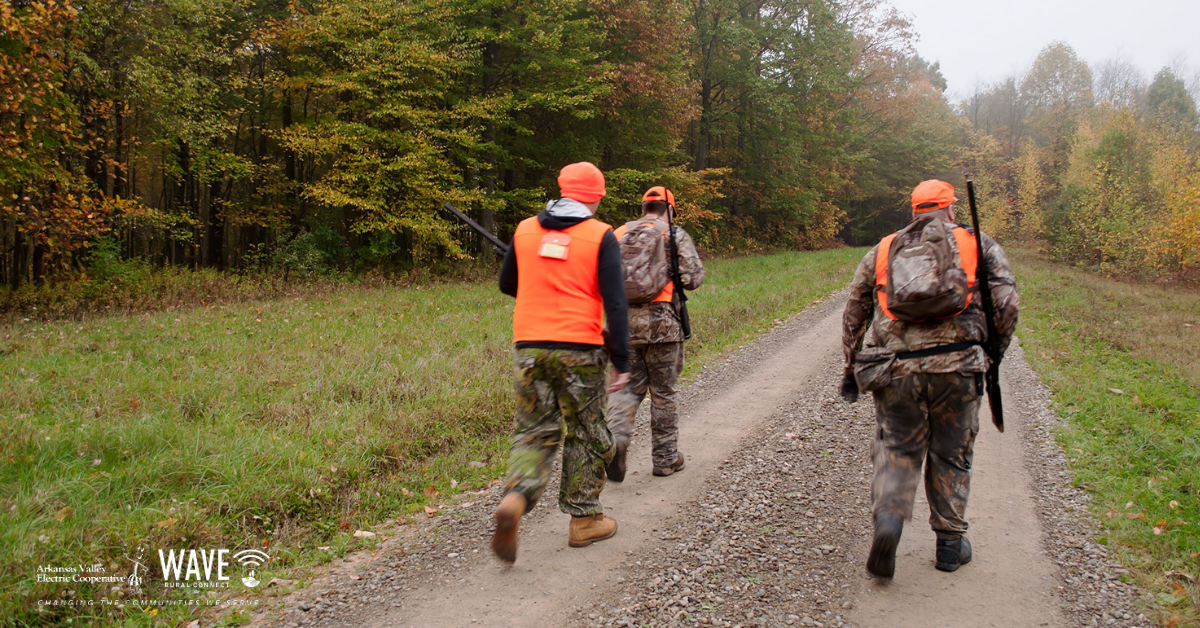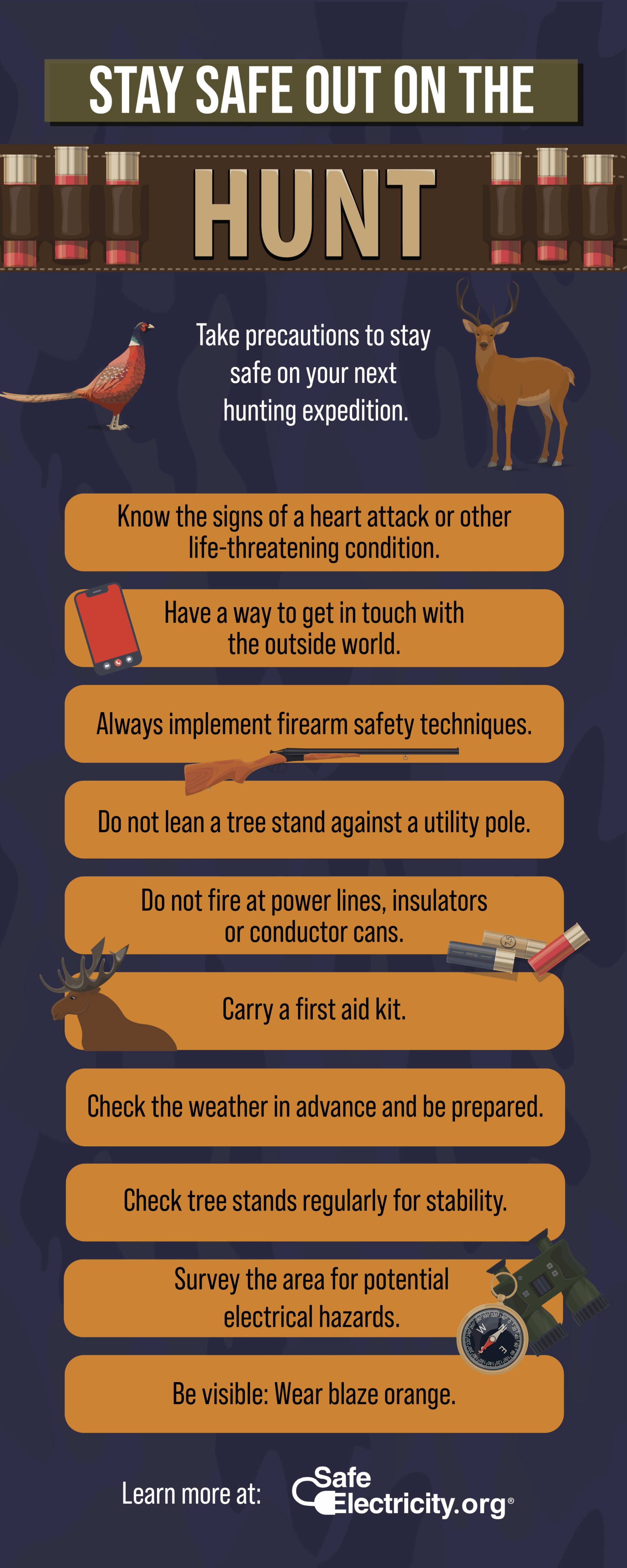Stay Safe While Hunting

The U.S. Fish and Wildlife Service estimates that 101.6 million Americans participate in wildlife-related activities each year, such as hunting, fishing, and wildlife-watching. It is estimated that there are 11.5 million hunters and nearly 36 million anglers.
Hunting is ranked as one of the safer activities when compared with other sports, including baseball, football, basketball, and jogging. Over the past 20 years, the number of unintentional firearm fatalities has declined. From 1997 to 2017, the number dropped by 50%, according to the National Shooting Sports Foundation (NSSF.org).
Hunters should put safety first, as incidents and accidents do happen. Cardiac disease, lacerations, and tree-stand accidents are the most common reasons for hunters to visit the emergency room.
 Be safe out there and follow these guidelines:
Be safe out there and follow these guidelines:
- Watch for the warning signs of a heart attack or other life-threatening condition. Hunters can walk far distances when shooting and dragging an animal. Completing these activities (especially if the person is not otherwise active) can increase the heart rate and induce heart attacks.
- Wear a full-body harness when in a tree stand to prevent falls that can cause serious injury.
- Check tree stands regularly; they can deteriorate over time.
- Do not lean tree stands against utility poles. Keep them far from overhead power lines.
- Watch for power lines in wooded areas. Make sure they will not be in your line of sight when shooting.
- Write and share a hunting plan. Where will the hunt take place and for how long?
- Have a way to get in touch with the outside world. Keep your cell phone in a pocket rather than in a pack. Take a portable battery charger.
- Know the hunting area. Check national forest boundaries and avoid private land. Survey the area for potential electrical hazards.
- Always carry a first-aid kit.
- Respect firearms: Have the safety on, handle the gun like it is always loaded, always point it away from others and know what and where the target is.
- Do not fire at power lines, insulators, or conductor cans. They can drop to the ground and energize it or cause a fire.
- Wear blaze orange.
To learn more about electrical safety, visit SafeElectricity.org.